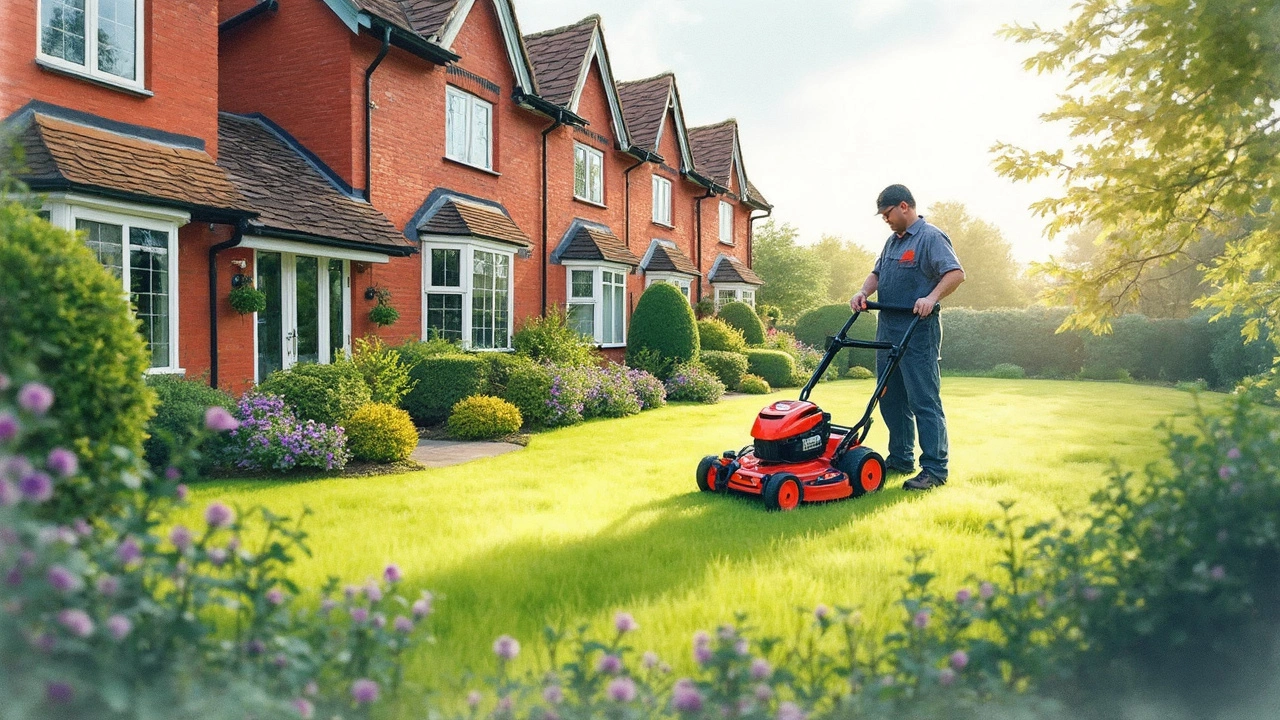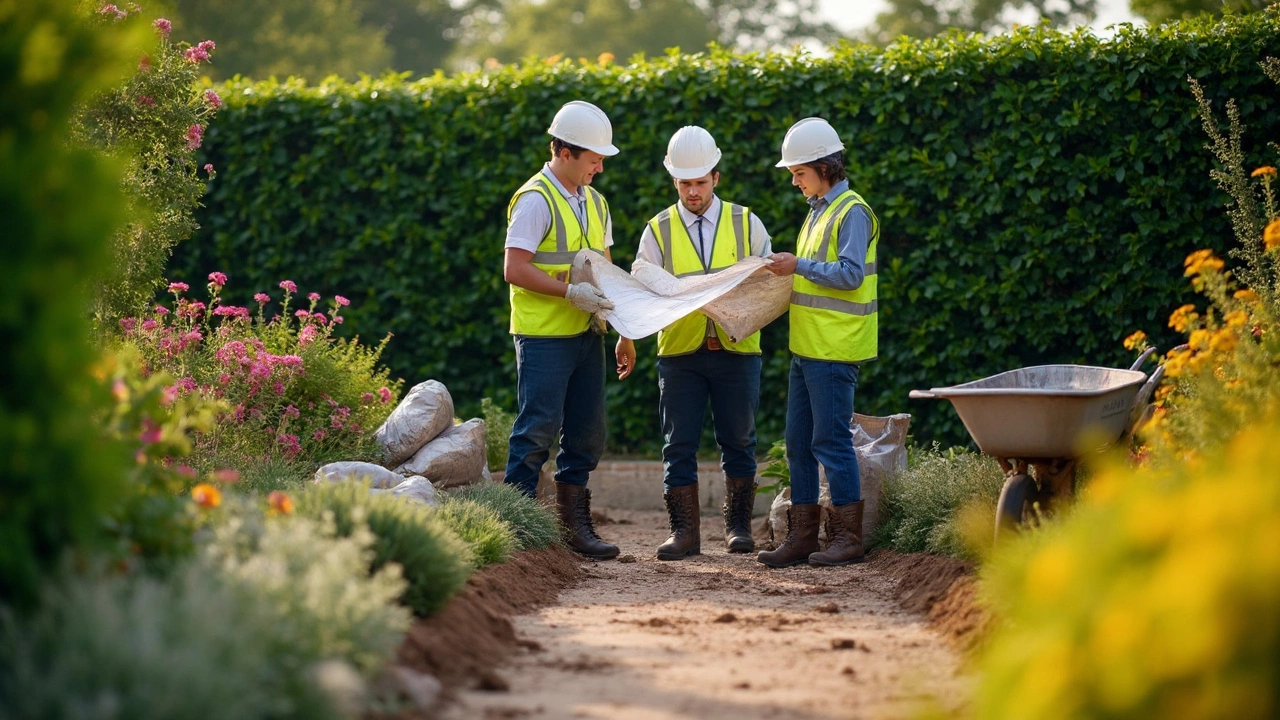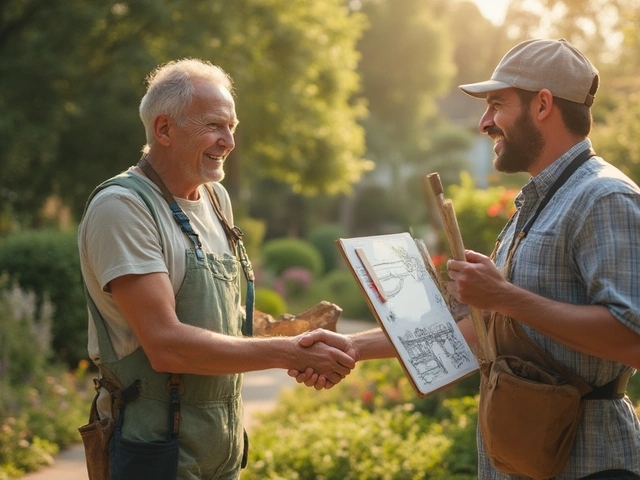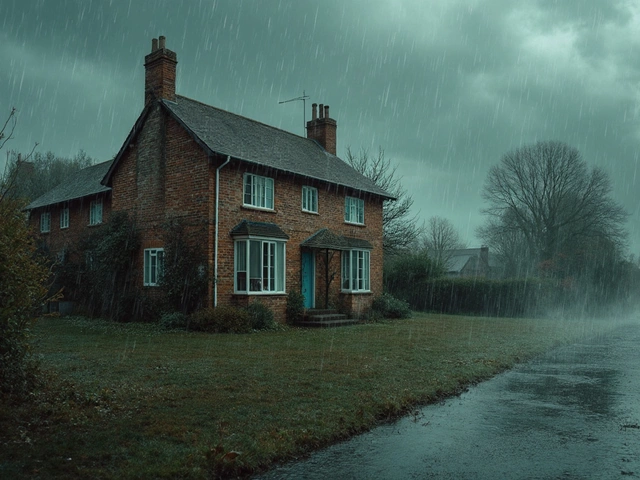Picture this: perfect stripes on your neighbor’s lawn, flower beds packed with color, and a garden that looks like it never sees a weed. Most people assume landscapers just mow grass and trim a few hedges, but that’s only scratching the surface. There’s real expertise behind every good-looking yard.
A landscaper isn’t just a human lawnmower—they know soil types, plant health, irrigation systems, and even outdoor lighting. They fix drainage issues, build walkways, and design spaces for everything from backyard barbecues to quiet fire pits. You’ll find them planting trees, laying sod, and even doing small construction jobs like building decks or stone walls. And trust me, when you see someone digging through thick clay or wrestling a root ball the size of a car tire, you realize this isn’t cushy indoor work.
- Beyond Mowing: The Real Scope of Landscaping
- What A Typical Day Looks Like
- Tools and Tricks of the Trade
- Tips for Picking a Trustworthy Landscaper
Beyond Mowing: The Real Scope of Landscaping
There’s way more to landscaping than an hour behind a noisy mower. A professional landscaper brings together design sense, plant knowledge, and some legit construction skills. They handle every outdoor need, whether your goal is a show-off front yard or a backyard that actually survives summer.
Basic lawn mowing is just the beginning. Here’s what falls under the real job description for landscaping services:
- Design & Planning: Landscapers create practical layouts, recommend plant types, and plan traffic flow. Most pros use sketches or software to help you see the vision before the first shovel hits dirt.
- Planting & Garden Care: From picking the right turf to choosing low-maintenance shrubs, their advice saves you from planting something that instantly dies. They know plant spacing, sunlight needs, and seasonal planting windows.
- Irrigation & Drainage: Forget dragging hoses—landscapers install soaker hoses, drip irrigation, or even full sprinkler systems to keep everything alive. They also build French drains or grading to fight soggy spots and water pooling.
- Hardscaping: We’re talking patios, walkways, fire pits, and even outdoor kitchens. Good landscaping involves stone, wood, and pavers—not just plants.
- Ongoing Maintenance: Keeping edges sharp, controlling weeds, pruning trees, spreading mulch, and fertilizing are all in a day’s work.
Think of a landscaper as your outdoor problem-solver. If your grass won’t grow or water keeps pooling near your house, they’ll figure out why and fix it. If you want to swap that patchy lawn for a kid-proof play area, they’ll map out everything from materials to the best spot for shade.
| Typical Landscaping Tasks | Time of Year |
|---|---|
| Mulching & Planting | Spring |
| Hardscaping Projects | Late Spring/Summer |
| Pruning Trees | Late Winter |
| Fertilizing & Weed Control | Spring/Fall |
Not every yard has the same needs. That’s why a good landscaper can tackle any combo of these jobs to fit your priorities, weather, and budget. So next time you see a truck full of tools and mulch bags, remember—it’s about a lot more than cutting grass.
What A Typical Day Looks Like
If you hang out with a landscaper for a day, you’ll see a mix of hard work, planning, and quick problem-solving. Most days start early—think sunrise, especially in hot months to beat the heat. First up: loading up the truck with mowers, trimmers, rakes, and sometimes bags of fertilizer or new plants. Tools and supplies eat up a decent chunk of the van or trailer space.
Once on site, the work is split between regular outdoor maintenance and project jobs. On a maintenance day, the crew might mow lawns, edge walkways, trim shrubs, and handle weeds. It’s not just about keeping things tidy, though. They often scan for pests or diseases, check for yellow patches, and adjust irrigation systems to keep everything healthy.
When jobs are bigger—like installing new flower beds or setting up a patio—it’s a different ballgame. Expect digging, moving dirt, or even breaking up old concrete. Landscapers might lay sod, plant trees, or spread mulch and gravel to boost curb appeal. Sometimes they’re dealing with drainage fixes; it can get pretty muddy fast.
There’s also a ton of communication. Landscapers check in with homeowners about special requests, explain project timelines, or give care instructions for new plantings. If you’ve ever seen an outdoor crew studying a tablet, they’re likely checking digital plans or updating work schedules.
- Early morning equipment prep
- Lawn mowing, edging, and weed control
- Pruning and shaping hedges or trees
- Seasonal tasks (like leaf cleanup or spring planting)
- Project installs—pathways, beds, or water features
- Quick fixes for broken sprinkler heads or drainage
- Client updates and planning for the next job
Want a little perspective on the hustle? According to the National Association of Landscape Professionals, commercial crews often service 6–10 properties per day. That’s a lot of grass cut and shrubs shaped before most folks sit down for lunch.

Tools and Tricks of the Trade
If you picture a landscaper hauling just a lawnmower and a shovel, you’re missing most of what’s going on. The right equipment makes or breaks a job, and most pros stash their trucks with a full arsenal.
- Lawn mowers: Not just push mowers—riders, zero-turns, and even robotic types for big properties.
- String trimmers & edgers: These create those sharp lines you see at the edge of walkways and flower beds.
- Leaf blowers: Gas or electric, these save serious time during fall clean-ups.
- Hedge trimmers: It’s hard to keep those shrubs looking sharp without these bad boys.
- Pruners and loppers: For those tricky branches or tight garden spaces.
- Wheelbarrows & carts: Nobody wants to drag 50 lbs of mulch by hand.
- Irrigation tools: From soaker hoses to high-tech smart controllers. Today’s setups can keep your yard green while cutting water waste.
- Soil testers: These help figure out what your plants actually need, so you’re not just guessing with fertilizer or lime.
- Mini excavators and skid-steers: Not every landscaper has them, but they come in handy for big projects like patios or clearing roots.
Skill matters as much as any tool. A seasoned landscaping services pro checks weather apps daily since mowing or planting on the wrong day can ruin everything. A trick for edge work: many landscapers run their trimmers upside down—that’s how you get razor-sharp lines every time.
Mixing and matching fertilizers, pest control, and weed killers is another part of the gig. And here’s a neat stat: According to the National Association of Landscape Professionals, on average, a professional saves a homeowner about 40 hours a year in yard work, thanks to better tools and know-how.
| Tool/Trick | Purpose |
|---|---|
| Leaf Blower | Quick debris cleanup |
| Soil Testing Kit | Identifies soil needs for better plant health |
| Edging With Trimmers | Creates crisp borders |
| Weather Planning Apps | Prevents wasted effort in storms or heat |
So next time a landscaper rolls in with a loaded trailer, remember—it’s not overkill. Each gadget saves time, ups the quality, or spares your back from doing the heavy lifting by hand.
Tips for Picking a Trustworthy Landscaper
Let’s face it—hiring a landscaper isn’t just about price. You want reliability, real skill, and someone who gets your yard looking sharp without giving you the runaround. But not all landscaping services are created equal, and picking the right pro means digging into a few details before you hand over your hard-earned cash.
The first step? Look for proof of insurance and proper licensing. A lot of states require landscapers to have a state or local license, especially if they’re offering pesticide treatments or bigger installs like irrigation systems. Always ask for a copy or check online with your local licensing board.
Reviews matter, but don’t just trust the ones on the company’s own site. Check Google, Yelp, or even your city’s Facebook community. Locals are quick to warn about flaky service or missed deadlines. A survey by HomeAdvisor showed that 78% of homeowners read at least four reviews before hiring a landscaping company.
Also, ask for details and photos of recent projects—before and after shots tell you a lot. A legit landscaper won’t hesitate to show off their best work. Here’s a tip: Pay attention to how they handle estimates. A trustworthy pro should always look at your property before quoting a price. Beware of any landscaper doing business out of the back of a truck with only a handshake.
"A professional landscaper should walk your property, discuss your needs, and provide a written plan—anything less is risky business." – National Association of Landscape Professionals
Want to be extra sure? Get details about what’s included in their maintenance or cleanup plans. How often do they visit? Do they handle weeds, fertilize, and adjust for seasons? Transparency is key.
| What To Ask | Why It Matters |
|---|---|
| Are you licensed and insured? | Covers you if something goes wrong on your property. |
| Do you have local references? | Shows their reputation holds up in your area. |
| What’s your process for maintenance? | Helps you avoid surprise fees and confusion. |
| Do you offer guarantees? | Shows they stand by their work. |
Bottom line: Don’t get wowed by a shiny truck or lowball quote. Ask for proof, compare a few companies, and remember—solid landscaping services should leave you with less hassle, not more.





